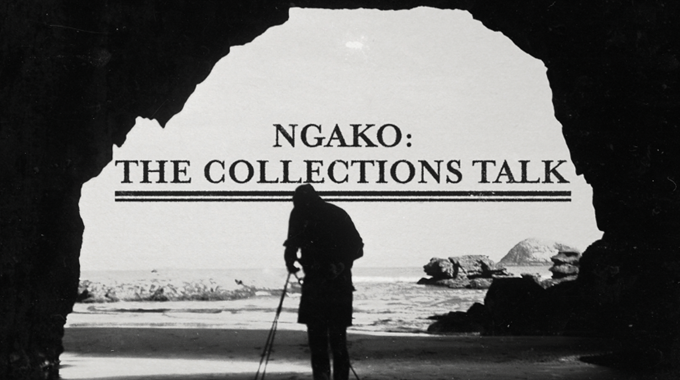As we celebrate Mahuru Māori, a remarkable piece of history resurfaces as part of Auckland Council Libraries’ Ngako: The Collections Talk, providing a glimpse into the rich linguistic heritage of te reo Māori.
Mahuru Māori is a month-long initiative aiming to normalise the use of te reo Māori in everyday life and encouraging everyone to give it a go – whatever your skill level.
Mahuru Māori follows the month of Mahuru, the fourth month in the maramataka Māori, beginning on Rāmere 15 September.
New and Complete Manual of Māori Conversation: Containing Phrases and Dialogues on a Variety of Useful and Interesting Topics, Together With a Few General Rules of Grammar; and a Comprehensive Vocabulary was published in 1885 by religious sister Suzanne Aubert and is a pristine example of early Māori phrasebooks, with later editions edited by Sir Āpirana Ngata.
Mother Aubert, as she was later known, was born in Lyon, France in 1835 and came to New Zealand at the request of Bishop Pompallier in 1860. She spent time in Auckland and Hawke’s Bay before settling in Hiruhārama/Jerusalem in the Whanganui region where she founded the Sisters of Compassion as well as writing the manual and other texts documenting early Māori cooking and rongoā Māori (medicine) that are now included in the UNESCO Memory of the World Register.
The New and Complete Manual of Māori Conversation was designed for non-te reo Māori speakers and sets out in the foreword that it will help readers to “acquire a little practical knowledge of the Māori language.”
Aubert’s work offers wide-ranging communicative phrases, a grammar summary, a vocabulary section and a lively dramatised English-Māori adaptation of an excerpt from Sir George Grey’s 1855 work on Māori mythology and traditions.
The phrasebook contains helpful ways to purchase goods and engage in trade at a time when economic and commercial development between Māori and Pakeha settlements were taking place. The manual includes the phrase: ‘kei te pīrangi ahau ki tētahi wēkete weweti’ – ‘I want a velvet waistcoat’ and ‘kua hoki ano te utu o te paraoa’ meaning ‘flour has again gone down in price’.
Aubert’s book speaks to political turmoil between Māori and Pakeha in 1885 with a section included on war. The book was published after the New Zealand Wars, but prior to the two World Wars, and includes the phrase ‘ta mātou e tūmanako ana kia mutu rawa te whawahi ki Nui Tireni nei’, translating to ‘we trust there will be no more wars in New Zealand’.
The book contains early use of various accents, including diacritics used in French being applied to te reo Māori, and early use of macrons to represent the length of the vowel which is still used today.
Xavier Forsman, Poukōkiri Rangahau Māori / Senior Librarian Māori Research at Auckland Council Libraries reflects on the importance of the text this Mahuru Māori.
“Aubert’s book is an important reminder of the people who were involved in capturing and recording the language, customs, and way of life of early Māori.
“Having texts such as these on record helps us and future generations understand and appreciate what’s been done to help grow and strengthen te reo Māori.”
The second edition of the manual was edited in 1901 by statesman, author, proponent of Māori culture and language, and the face of our $50 bill - Sir Āpirana Ngata. Sir Āpirana wisely shortened the title to A Complete Manual of Māori Conversation and Grammar with Vocabulary and expanded the section on grammar in the text. It’s believed that that the prominence of the book was enhanced by having Sir Āpirana’s name attached to it.
Although there’s no mention of Aubert, the phrasebooks are very similar with differences in the pronunciation of ‘ā’ which is closer to how it is pronounced today and advises readers to pronounce ‘wh’ as in whero and to avoid giving it the sharp sound of ‘f’ – a more subtle pronunciation than what we’re used to hearing currently.
Further editions of the book focus on trade, with phrases updated to represent the technological advancements made in New Zealand, including advice on how to buy and sell cars and phrases to describe airplanes flying overhead, and a section of facts about New Zealand including the question ‘na wai a Niu Tireni ī toro?’ / ‘who discovered New Zealand?’, answered in the book as ‘na Kapene Kūki’ / ‘Captain Cook’.
The eighth and final edition of the manual was published in 1964, representing a shift in how te reo Māori was taught around Aotearoa with a move towards kōhanga reo and language immersion, wider literature for learners available and greater diversity of specialists branching out into specific topics such as whakataukī (proverbs) and waiata (song).
For those attempting to begin their reo journey this Te Wiki o te Reo Māori, Xavier recommends the works of Scotty Morrison such as Māori Made Easy: For Everyday Learners of the Māori Language and Māori at Work, as well as early phrasebooks.
“I have no hesitation in recommending Aubert and Ngata’s phrasebooks to expand your language skills and to learn more about the whakapapa of how we understand te reo Māori and how it’s taught and learned.”
Watch the video above, ‘Whakapapa of a Māori phrasebook’ to learn more about this text and the history of te reo Māori as a written language in Aotearoa, as part of Auckland Council Libraries’ video series Ngako: The Collections Talk.
Various copies of later editions of New and Complete Manual of Māori Conversation are available throughout Auckland Council Libraries, and two copies of Suzanne Aubert’s original 1885 text are available to view at Auckland Central Library as part of their Special Collections.


